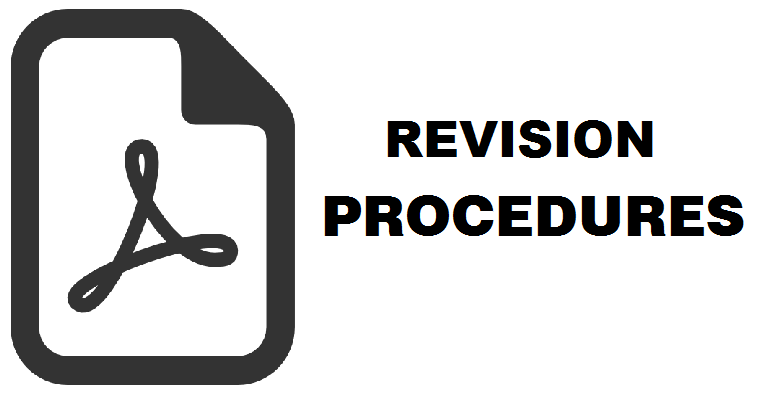Pengaruh soft dan hard services terhadap akreditasi dan loyalitas pemustaka
Sungadi Sungadi(1*)
(1) Perpustakaan, Universitas Islam Indonesia, Yogyakarta
(*) Corresponding Author
Abstract
Introduction. As of January 2018 The Directorate of UII Library re-obtained the accreditation A from the National Library of Indonesia, and also become the best unit of UII in 2017, it needs to have further evaluation.
Data collection method. The survey was conducted at UII Library in July-October 2017, with sample of 252 students as respondents using purposive sampling. The hypothesis in this paper was there is influence between soft and hard services to user loyalty through acceptable accreditation intervening variables.
Data analysis. The data was analysed by using multiple regression and path analysis in SPSS 16.0. Multiple regression was used to test direct influence between variables, while path analysis was used to determine the effect of exogenous variables on endogenous variables through intervening variable.
Results and Discussions. The results showed that the level of service quality and loyalty was high-very high (79.75-82.83%). The simultaneous influence of soft service (X1) and hard service (X2) on loyalty (Z) through accreditation (Y) increased from 0.329 to 0.442 (0.442> 0.329). Simultaneously soft service (X1), hard service (X2) via accreditation (Y)-affected loyalty of library users (Z).
Conclusions. In this research can be concluded that: Quality of service in UII Library Directorate in high condition s.d very high, while quality assurance level (accreditation) categorized high, and loyality pemustaka at very high level. The result of data analysis shows that the variable of soft service quality and hard there is direct influence to loyalty pemustaka. Meanwhile, the variable of soft and hard service through accreditation variable has an effect on the loyalty of the user.
Future researchers can develop this research by involving all libraries within the UII as an object of study.
Keywords
Full Text:
PDFReferences
Ahmad, Masitah & Abawajy, Jemal H. (2014). Digital Library Service Quality Assessment Model. Procedia - Social and Behavioral Sciences, 129, 571 – 580.
Blackmur, D., (2004). Issues in higher education quality assurance. Australian Journal of Public Administration, 63 (2), 105–116.
Brennan, J., Shah, T., (2000). Managing quality in higher education: an international perspective on institutional assessment and change. OCED, SRHE and Open University Press, UK.
Dahan, Suziyana Mat dkk. (2016). Surveying Users' Perception of Academic Library Services Quality: A Case Study in Universiti Malaysia Pahang (UMP) Library. The Journal of Academic Librarianship, 42, 38-43.
Dewi, Maria Ulfah Purnama. (2017). Peran kualitas layanan dan merchandising terhadap kepuasan dan loyalitas pelanggan. Laporan Penelitian. Yogyakarta: Fakultas Eknomi UII.
Driver, C. & Johnston, R. (2001). Understanding Service Customers The Value of Hard and Soft Attributes, Journal of Service Research, 4 (2): 130-139.
HIMMAH UII Online. (2016). Penuhi rasio, UII kurangi jumlah mahasiswa baru http://lpmhimmahuii.org/2016/08/penuhi-rasio-uii-kurangi-jumlah-mahasiswa-baru-2/
Jung Cheol Shin (2017). Quality assurance systems as a higher education policy tool in Korea: International convergence and local contexts. International Journal of Educational Development October 2017.
Kasiri, Leila Agha dkk. (2017). Integration of standardization and customization: Impact on service quality, customer satisfaction, and loyalty. Journal of Retailing and Consumer Services, 35, 91–97.
Lierop, Dea van dan Ahmed El-Geneidy. (2016) Enjoying loyalty: The relationship between service quality, customer satisfaction, and behavioral intentions in public transit. Research in Transportation Economics, 59, 50e59.
Meesala, Appalayya & Paul, Justin. (2018). Service quality, consumer satisfaction and loyalty in hospitals: Thinking for the future. Journal of Retailing and Consumer Services, 40, 261–269.
Orsingher, C., (2006). Assessing quality in european higher education institutions: dimension, methods, and procedures. Physica-Verlag, Heidelberg.
Pedramnia, Modiramani and Ghanbarabadi (2012). An analysis of service quality in academic libraries using LibQUAL scale. Library Management, 33(3), 159–167 Emerald [Online]. Available at: http://www.emeraldinsight.com/0143-5124.htm
Perellon, J.F., (2005). Path Dependency and the Politics of Quality Assurance in Higher Education. Journal of Tertiary Educational and Management, 11, 279–298.
Perellon, J.F., (2007). Analysing quality assurance in higher education: proposals for a conceptual framework aand methodological implications. In: Westerheijden, D.F., Stensaker, B., Rora, M.J. (Eds.), Quality Assurance in Higher Education. Springer, Dordrecht, the Netherlands, pp. 155–178.
Riduwan. (2015). Pengantar statistika untuk penelitian pendidikan, sosial, ekonomi, komunikasi, dan bisnis cet. ke 8. Bandung: Alfabeta.
Salter, B., & Tapper, T. (2000). The Politics of Governance in Higher Education: The Case of Quality Assurance. Journal of Political Studies, 48, 66–87.
Sugiyono. (2011). Metode penelitian kuantitatif, kualitatif dan R & D. Bandung: Alfabeta.
Taplin, Ross H. (2013). The influence of competition on visitor satisfaction and loyalty. Journal of Tourism Management, 36, 238-246.
Wolter, Jeremy S. dkk. (2017). Creating Ultimate Customer Loyalty Through Loyalty Conviction andCustomer-Company Identification. Journal of Retailing, 93 (4), 458–476.
Yu-Hern Chang & Chung-Hsing Yeh. (2017). Corporate social responsibility and customer loyalty in intercity bus servis. Transport Policy, 59, 38–45.Article Metrics
Refbacks
- There are currently no refbacks.
Copyright (c) 2018 Berkala Ilmu Perpustakaan dan Informasi

This work is licensed under a Creative Commons Attribution-ShareAlike 4.0 International License.











